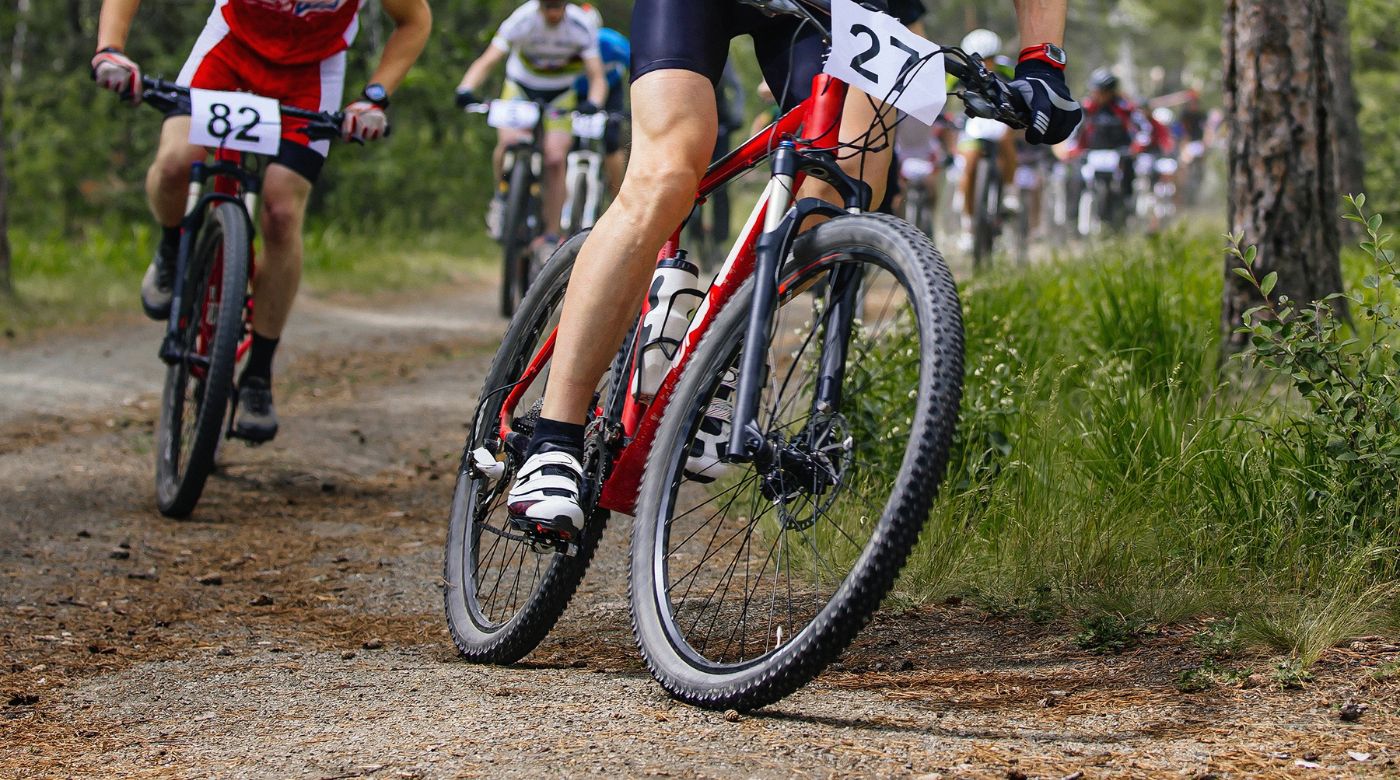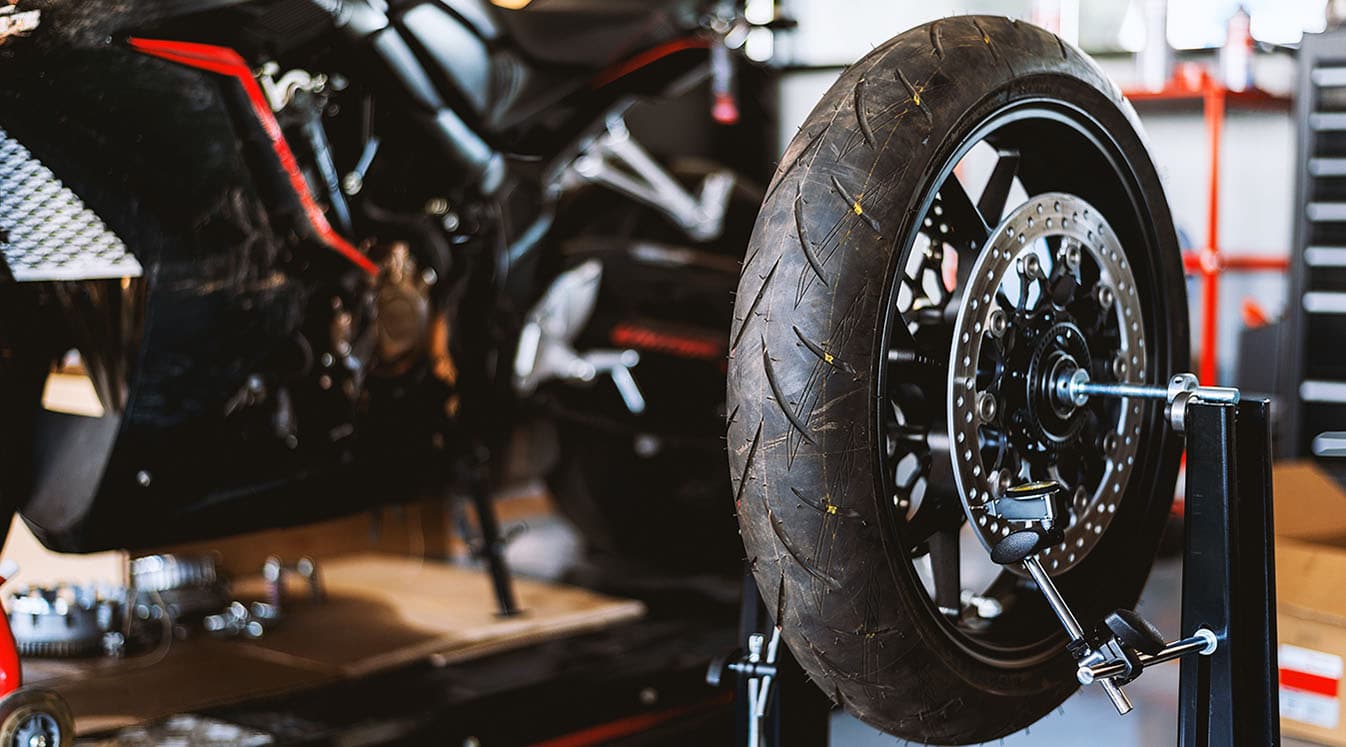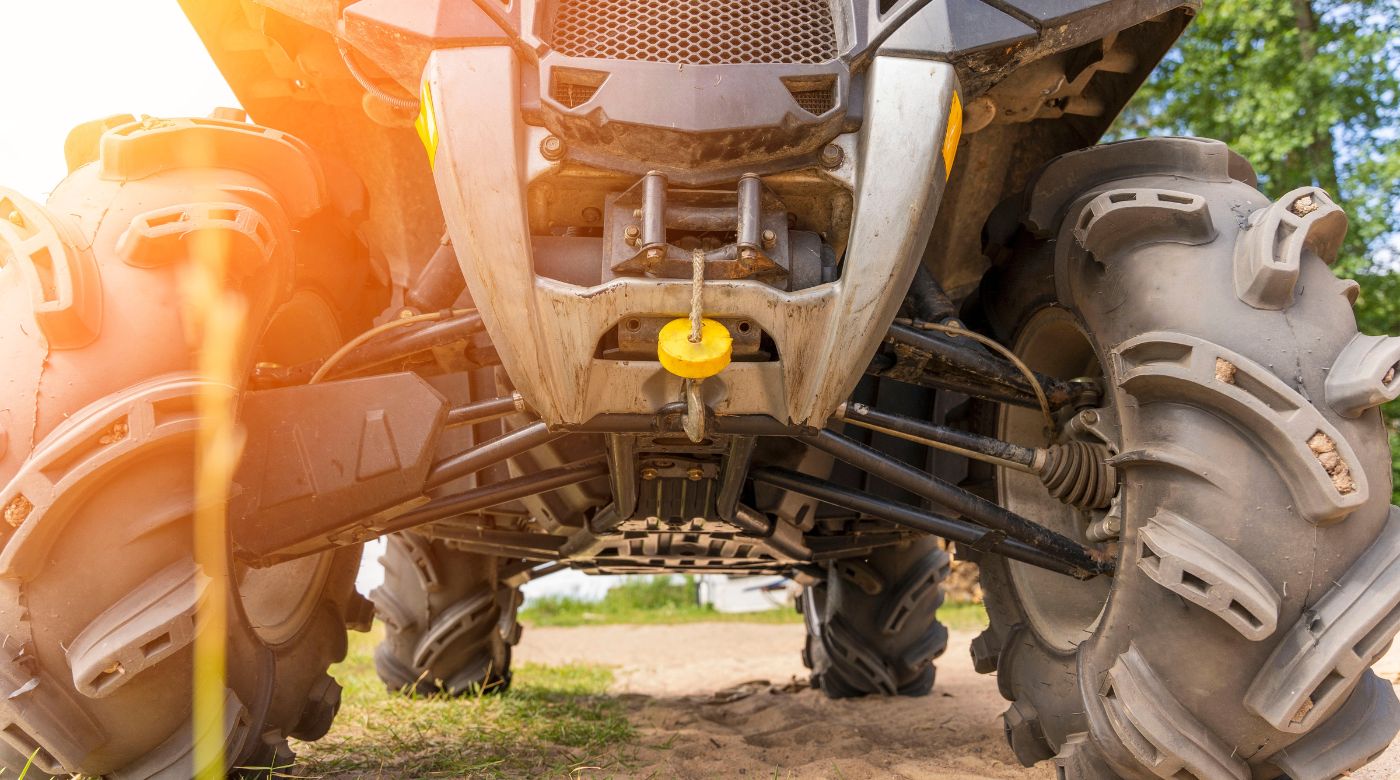En descente, chaque seconde compte. Les cyclistes pensent souvent, à tort, que les montées sont plus difficiles que les descentes. Si la gravité peut jouer en votre faveur en offrant à vos jambes un peu de répit, votre vitesse peut rapidement vous échapper, ce qui vous laisse moins de temps pour éviter les obstacles. Suivez ce guide des courses de VTT en descente pour atteindre le bas de la pente en un temps record.
Qu'est-ce que la course de VTT en descente ?
Les courses de VTT en descente sont une discipline particulière où les participants doivent descendre le plus rapidement possible un parcours pentu. La piste commence généralement au sommet d'une colline et serpente vers le bas, jusqu'à la ligne d'arrivée. Le cycliste qui termine le parcours le plus rapidement l'emporte, souvent de quelques dixièmes de seconde.
La plupart des coureurs atteignent une vitesse de 50 à 65 km/h sur piste modérée, Max Stöckl détenant le record mondial avec 167 km/h.
Quel équipement pour les courses de VTT en descente ?
Préparez-vous à courir avec cet équipement essentiel.
Vélos de montagne de descente
Il vous faudra un VTT capable de gérer l'intensité d'une piste de descente. Les VTT traditionnels peuvent franchir des collines escarpées, mais si vous voulez vraiment gagner, envisagez de vous équiper d'un VTT de descente avec des angles de direction plus ouverts, des freins renforcés et des suspensions robustes pour réduire les vibrations.
Un angle de tête d'environ 62 degrés rend le vélo plus stable. Les fourches suspendues doivent être de 200 mm ou plus. Utilisez des amortisseurs hélicoïdaux plutôt que des amortisseurs pneumatiques, afin de renforcer l'amortissement. Il doit avoir moins de vitesses qu'un VTT classique, généralement 7 au lieu de 12. Les freins sont dotés de rotors de 220 mm et d'étriers à quatre pistons pour vous permettre de vous arrêter soudainement.
Équipement de descente
Munissez-vous d'un équipement de protection durable, qui vous protégera contre les éraflures et les chutes. Il n'est pas rare de basculer par-dessus le guidon dans les descentes abruptes, et l'atterrissage peut être brutal.
Portez un casque intégral muni d'une visière pour protéger votre tête des blessures, éviter les éblouissements et empêcher des débris de se loger dans vos yeux. Ajoutez des genouillères, des épaulières et des coudières pour une meilleure résistance aux chutes. Avec le bon équipement, vous devriez pouvoir vous relever et continuer à pédaler même si vous tombez.
Rouler au côté d'un autre cycliste vous aidera à vous familiariser avec le parcours, mais ne quittez pas la piste des yeux et gardez toujours les mains sur le guidon. Utilisez des casques vélo Bluetooth pour communiquer sans fil avec votre compagnon de route, échanger des conseils, vous avertir mutuellement en cas d'obstacle, et identifier le chemin le plus praticable sans vous mettre en danger.

Source : anatoliy_gleb/Shutterstock.com
Le Packtalk Outdoor de Cardo s'adapte parfaitement à votre casque intégral pour vous permettre de rester toujours concentré. Utilisez cet appareil pour contrôler l'oreillette par commande vocale. Il se connecte automatiquement dès qu'il est à portée via la technologie DMC et la technologie Bluetooth, de sorte que vous n'avez pas à toucher le dispositif pendant que vous roulez. Il suffit de le fixer et de rouler pour communiquer les mains libres.
Vous préparer à votre première course de VTT en descente
Maîtrisez d'abord des pentes faibles afin de vous familiariser avec le VTT de descente avant de vous attaquer à des parcours plus exigeants. Entraînez-vous à faire des sauts pour améliorer votre temps de descente. Réussir l'atterrissage pourrait vous faire gagner de précieuses secondes. Si vous rencontrez un saut important lors de votre première descente sur une piste, envisagez de le contourner jusqu'à ce que vous vous sentiez plus en confiance.
Détendez-vous et gardez vos membres souples pour réagir rapidement aux variations de terrain. Au départ, penchez-vous en arrière, la colonne vertébrale bien droite, pour éviter de passer par-dessus le guidon. Se pencher en avant peut améliorer votre temps, mais il est facile d'aller trop loin.
Servez-vous de vos bras pour absorber les vibrations de la route tout en gardant une bonne prise. Une courbe ou bosse soudaine pouvant facilement vous déséquilibrer, efforcez-vous de garder le vélo centré et stable en vous aidant de vos mains et de vos cuisses. Sentez où le vélo essaie d'aller et laissez la gravité vous guider. Gardez à l'esprit ces conseils supplémentaires afin d'acquérir les compétences nécessaires pour gagner une course de VTT en descente.
Évitez de rouler dans la boue, et ne vous aventurez pas sur les pistes après une forte pluie. L'humidité supplémentaire peut encrasser les freins et vous empêcher d’agripper le guidon. Vérifiez l'état du parcours avant de monter votre vélo au sommet.

Source : Kuznetcov_Konstantin/Shutterstock.com
C'est en forgeant qu'on devient forgeron. Plus vous descendrez le parcours, plus votre temps s'améliorera. Utilisez un équipement de descente approprié pour atteindre le bas de la pente rapidement, et en toute sécurité. Commencez par des pentes douces, puis évoluez progressivement vers des chemins plus escarpés qui mettront vos compétences à l'épreuve. Après quelques mois ou quelques années, vous serez le premier à franchir la ligne d'arrivée.
Essayez le Packtalk Outdoor de Cardo dès aujourd'hui




